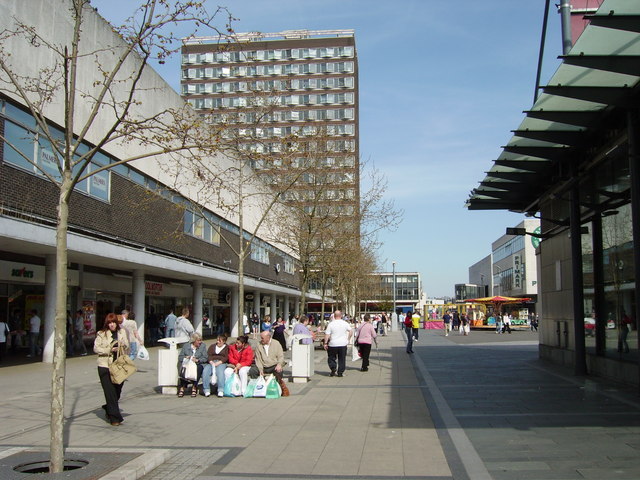
Basildon
Basildon is the rough-around-the-edges heart of the archetypical New Town, an urban oasis set just outside of the Green Belt. The Brutalist town centre, which has always divided opinions, is a pupular retail zone, with all the amenities one could need, like supermarkets, a shopping centre, some restaurants and pubs, and plenty for kids to do. However in its concrete-heavy design you’d hardly recognise that you’re amidst a sea of Essex countryside, unless you visit the green expanse of Northlands Park. The residential areas outside the town centre are fairly nondescript post-war terraced houses that line winding streets and plenty of culs-de-sac, so it’s easy to get lost if you’re not familiar with the area. That said, it is a pleasant and safe, family-oriented suburban town, with good train connections to central London despite its distance, which makes it a popular home for commuters who can travel to Stratford or Fenchurch Street in under 40 minutes from Basildon station. It also has easy access to the surrounding greenery and coastline.
Long a tiny countryside parish, the area saw a small amount of growth with a few smallholdings appearing on agricultural land alongside the expansion of the railways in the late 19th century, but there was little by way of planned infrastructure, with practically no sanitation, gas or even surfaced roads. However, Basildon as we know it today emerged almost over night (by town planning standards at least) as a result of the destruction of the Blitz. One of the first New Towns set out in the 1946 New Towns Act, and was one of 11 original sites intended to house those who had lost their homes during the bombing campaigns on London, and to prevent sprawl into the newly designated Green Belt. Basildon’s development corporation was formed in 1949, and building began in 1950, with the first residents moving in from the rubble of the east end just a year later! The truly modern, utopian design upset many of the original rural residents as they saw the government’s compulsory purchase of much of the local greenery an imposition on them and their way of life, and the futuristic design and accessible plan was a far cry from the parochial stylings of the past. The government provided grants for businesses that wished to set up new offices or factories in Basilton, and many, such as the Ford Motor Company, took them up on the offer, leading to Basildon’s welll-developed industrial base.

Basildon has its fair share of 80s musical heritage too. It was the home of seminal electronic pop band Depeche Mode, Perry Bamonte from the Cure, and the solo artist and former member of Yazoo, Alison Moyet.
Like many New Towns, Basildon’s roads outside of the town centre were designed solely with cars in mind, which can make the area somewhat difficult to navigate by foot. In addition this led to only a later adoption of local public transport, meaning the buses can be infrequent and rarely run late into the night. And in addition to many town centres in the counties surrounding London, council underfunding and poor uses of funds has left elements of the neighbourhood slightly drab over recent years, despite it being part of the 2010 Thames Gateway project.